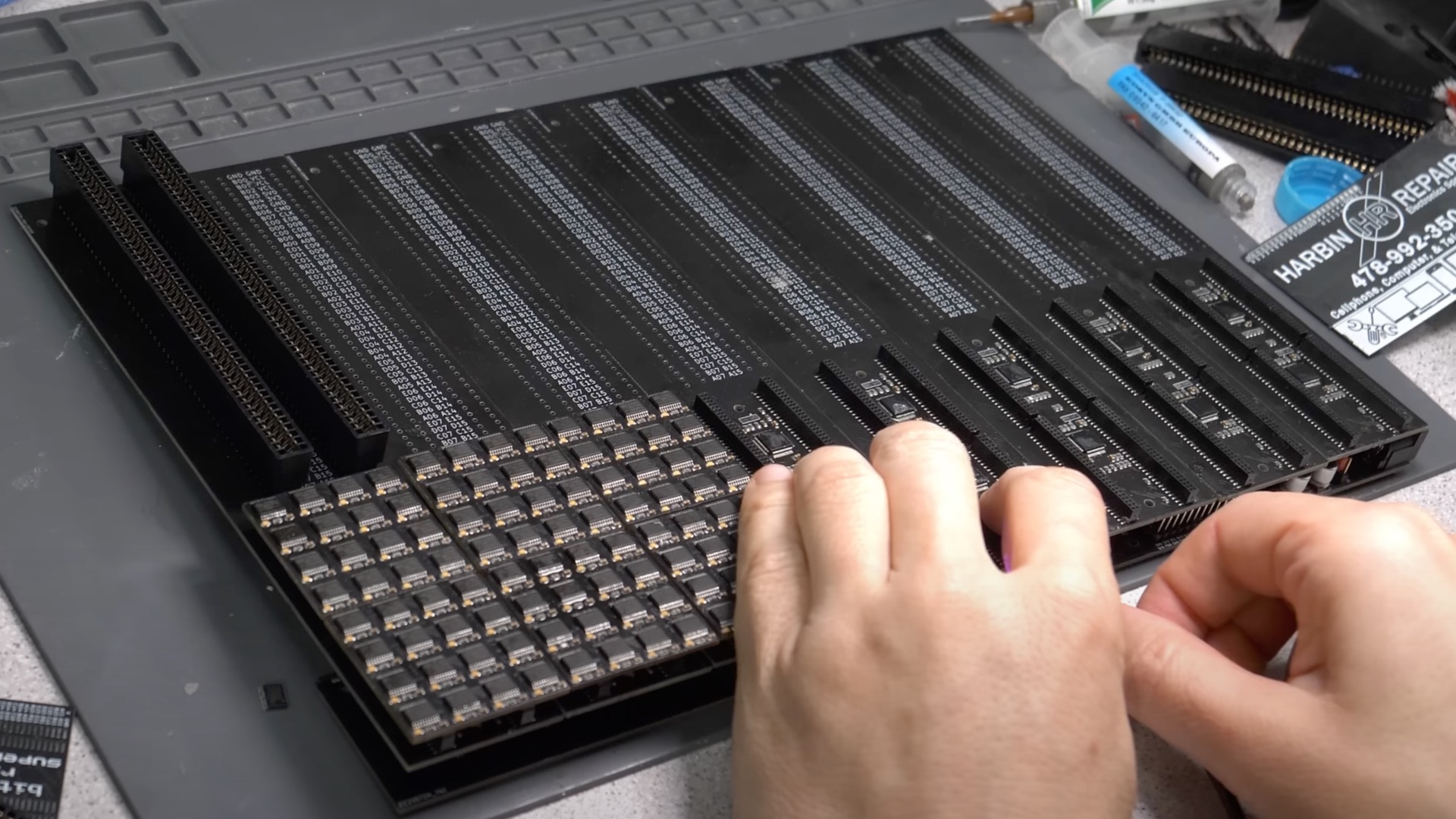
Tech gadget builder bitluni recently unveiled his latest build, a 256-core RISC-V megacluster. The YouTube content creator demonstrated the miniature supercomputer in a video that highlighted the design, production, assembly, and testing phases. Not everything went as planned, but the results are actually pretty nerdy and cool.
For the design, bitluni combined 16 RISC-V superclusters into a single megacluster. Each supercluster consisted of 16 CH32V003 RISC-V microcontrollers connected with an 8-bit bus. Each supercluster contains its own LED because bitluni wanted to be able to display a line of text.
To deal with potential problems inherent in building an extremely large (and power-hungry) single PCB for the megacluster, bitluni installed the superclusters in pairs on eight “cluster blade” designs. The inventor used two additional CH32V203 microcontrollers on each blade to serve as a bridge between each supercluster and the main 8-bit megacluster bus.
In the video, you can watch the assembly in time-lapse as bitluni attaches the microcontrollers to the PCB, solders the GPIO headers, and puts the entire megacluster together for testing. The blades all attach to a single main board, and as bitluni demonstrated first the LEDs blinking, he also found one of the mistakes he made in the design.
Without an internal clock source, bitluni discovered his LEDs blinked out of sync with each other. So, even though the lights initially blinked simultaneously, they quickly lost that synchronicity and flashed randomly. (Still, it’s almost hypnotic to watch.)
The creator went on to describe how to programmatically deal with bus collisions as all the microcontrollers talked at once.
Ultimately, bitluni’s megacluster used 256 RISC-V microcontrollers at 48 MHz and 17 RISC-V chips at 144 MHz. It includes 640 GPIO pins and 256 ADC circuits. He describes the 14.7 GHz combined single-core clock rate as "not that impressive but also not too shabby."
Considering bitluni designed and built a supercomputer that is small enough to sit on a TV tray, that description may be a bit of an understatement. Let’s also not forget that what he built cost far less than you would spend on even the used and leaky Cheyenne supercomputer.







